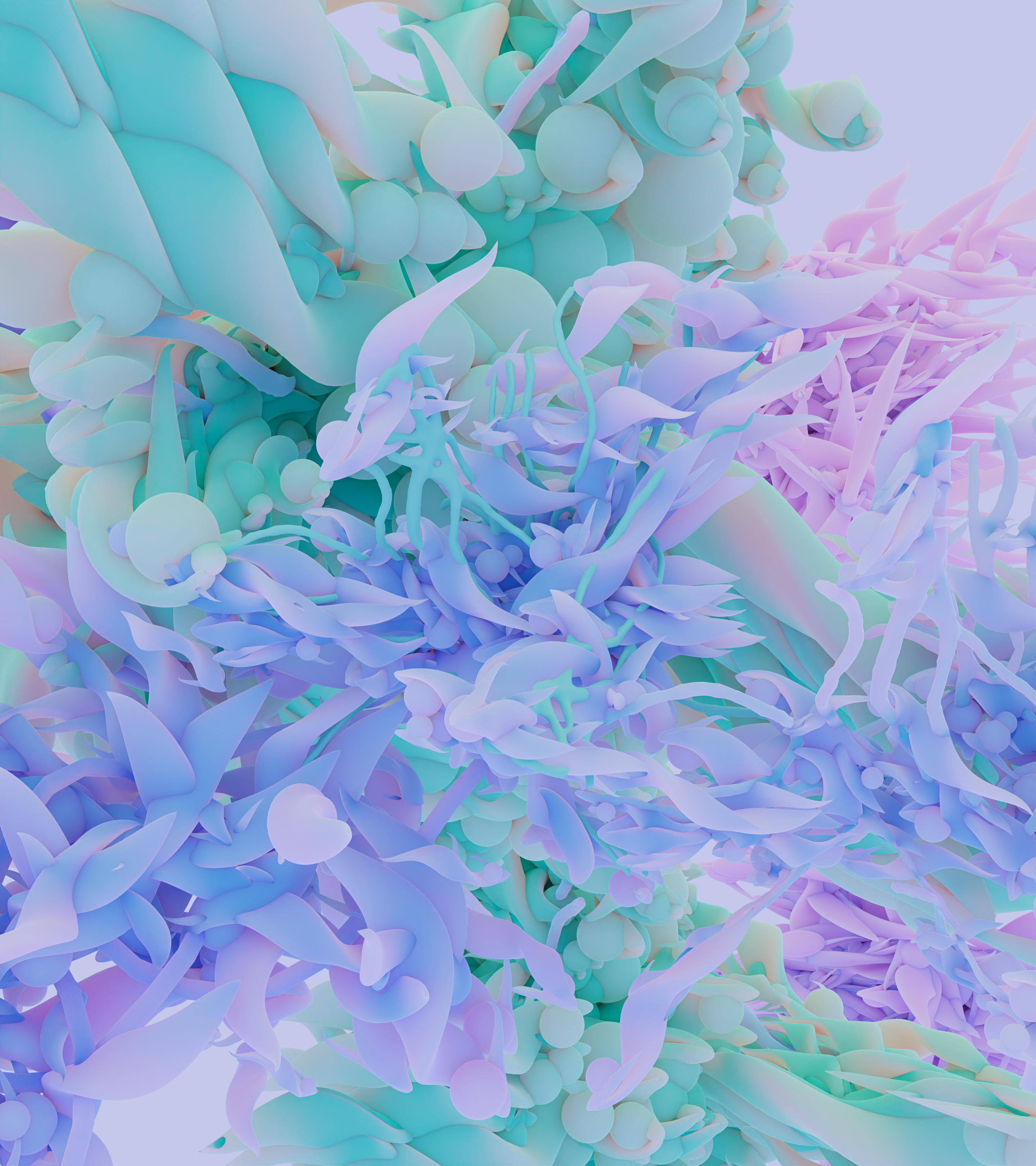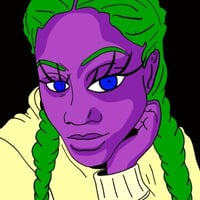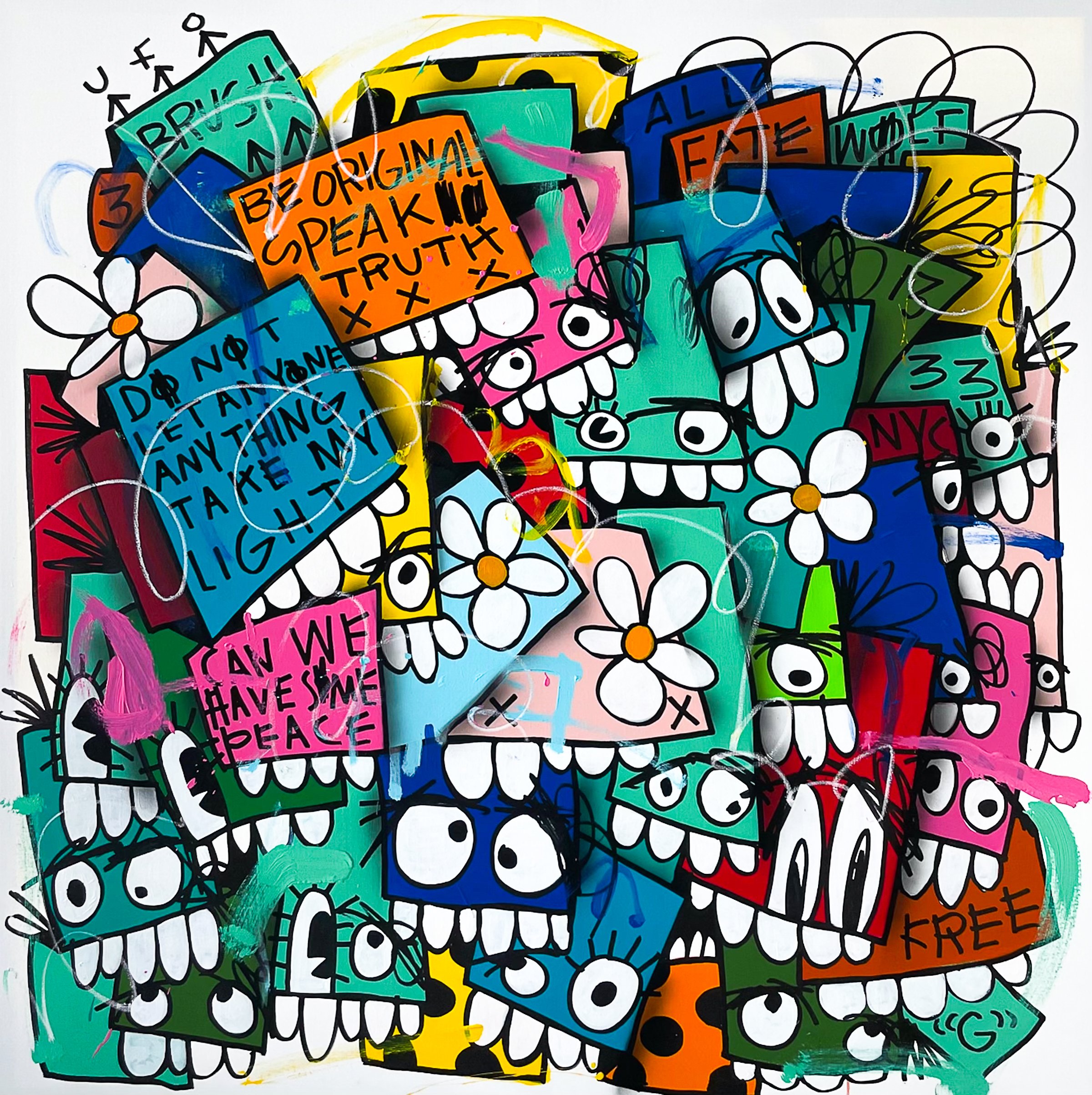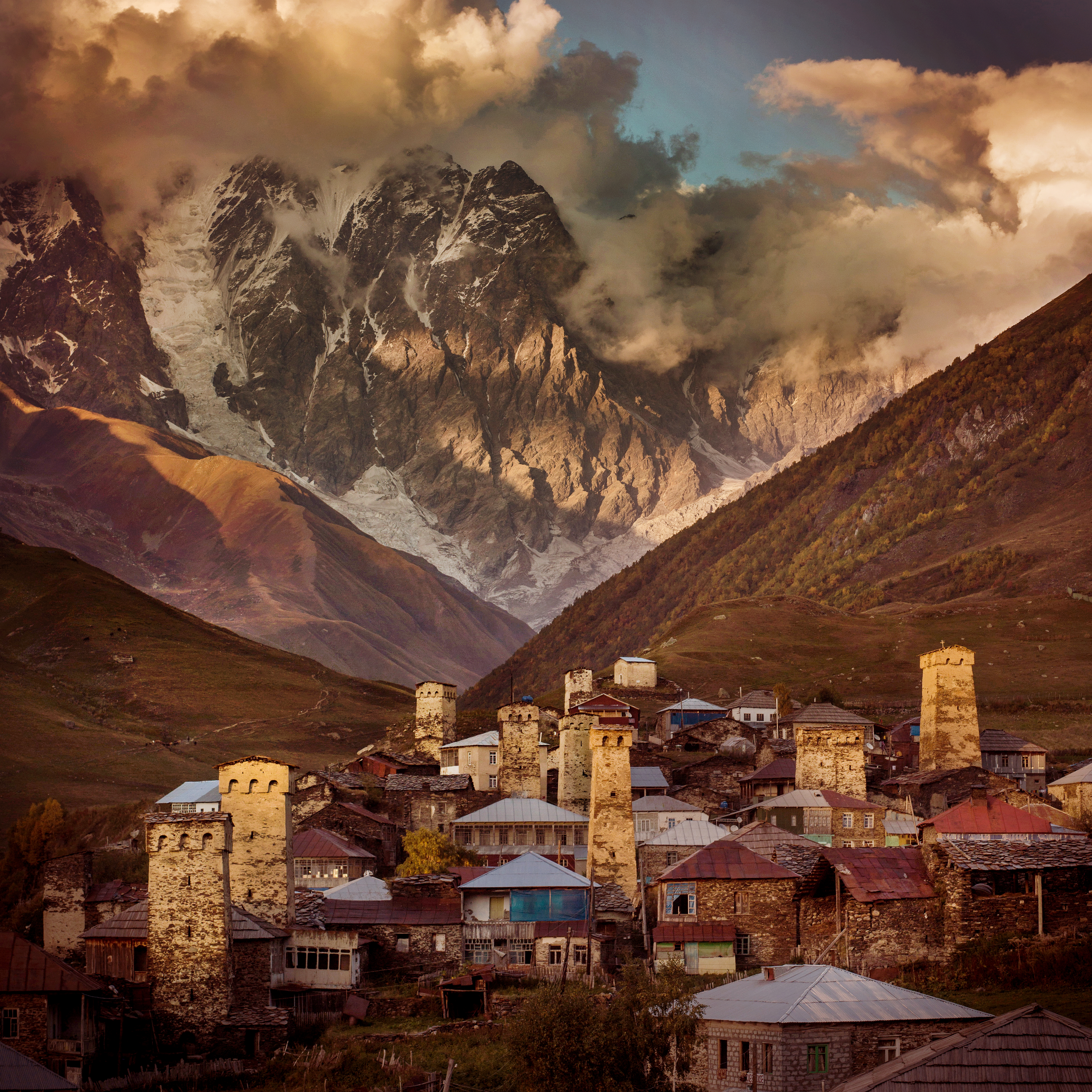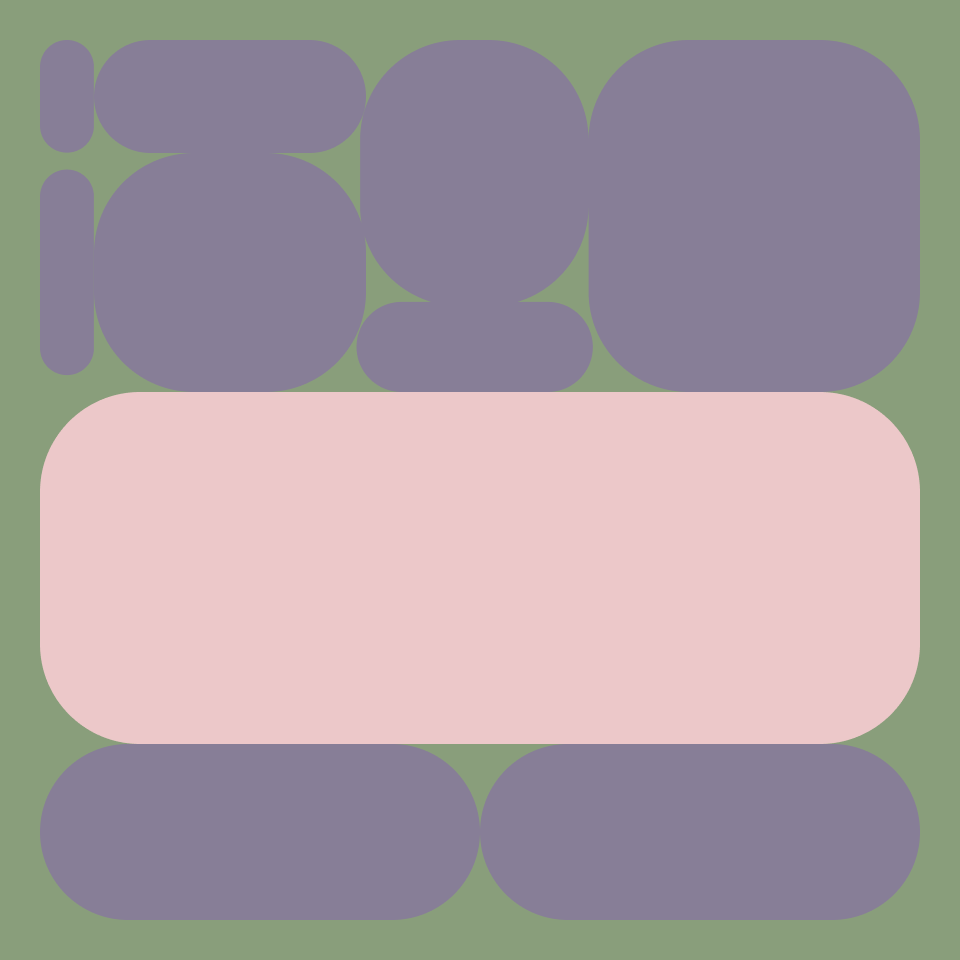AN INTERVIEW WITH SINZIANA VELICESCU
Founded in 2021, Vellum LA is a Los Angeles based gallery with a focus on new media and digital art. Vellum LA’s goal is to meaningfully situate the digital art community within the context of art history, while also educating the public on the potential of blockchain to impact the future of art. Vellum’s emphasis on physical exhibition is core to their approach— whether by displaying artwork on state-of-the-art Luma Canvas displays, curating and creating site specific immersive experiences, or taking over larger-scale media installations around the world, Vellum aims to reinvent how digital art is experienced in the physical world. In this interview, Sinziana Velicescu, Vellum’s director and curator, shares …
Linda Dounia: Can you tell me more about Vellum’s entry in web3 and your motivation to join the Space Race.
Sinziana Velicescu: Ever since we launched Vellum as a gallery, before it was even a physical space, we had our first exhibition at the LA Art Show and SuperRare was our first web3 partner. Since then, about July 2021, we’ve been working with SuperRare for our exhibitions. When we were looking for a web3 partner, we looked at different platforms and noticed that SuperRare was a marketplace that cared about art and lead in terms of curation and storytelling around exhibitions. We liked the fact the platform was application based and we felt that they had the kind of rigor we were looking for. Our values were aligned from the beginning, especially in terms of how much context we, as a physical space, wanted to build around artists and releases.
We also felt SuperRare would help us with our goal to bridge the gap between the web3 community and the traditional art world. Over time, we have been able to develop relationships with certain collectors that were not exclusively collecting on SuperRare, but preferred to. That's where they found the grails they were looking for. We were able to establish relationships with these collectors and share with them what we were up to in a strategic way. The first show we worked on, Electric Psychedelia guest curated by Ellie Pritz, featured a lot of SuperRare artists who were known in the space but not necessarily top sellers. All of them sold successfully, and that was a confirmation for us that we had the right partner.
 "Sporus 10" by Caleb Craig on SuperRare. Presented by Vellum LA.
"Sporus 10" by Caleb Craig on SuperRare. Presented by Vellum LA.
LD: What have you learned about connecting web3 with the traditional art world?
SV: For our second show, Next Gen, we started to think about things a little differently. We wanted to create a show around the next emerging digital artists from Los Angeles. That was the theme of the show and we had an open call to find artists. We handpicked the ones we felt were strong and most of them were not even in web3. They were established in the traditional art world though but hadn’t yet made the leap into web3. Next Gen launched them in the space, which was a positive outcome. We were strategic in setting attainable price points to reflect that these artists were new and to ensure they were able to make the most out of the exposure of the show.
During this show, we also experimented with selling works in person and were able to successfully onboard new collectors into the space. It helped us answer the question of how we convert people who walk into our gallery and are curious about digital art into collectors in the space. The first hurdle is getting through the technical aspects of setting up and working with a crypto wallet. Then beyond that, it’s about having the right hook. For Next Gen, a combination of choosing artists who were already respected in the traditional art world and having the right price point did the trick.
We’re not only interested in shining a light on emerging talent. We also want to successfully onboard new collectors from outside the space and expand our collector base in that way. There is a lot of potential there, a lot of interested parties who are curious about web3, would like to learn more about it, but maybe don’t have the right tools or access. As a physical gallery, we can guide people to learn more about web3 and help them safely navigate it, and do all this in-person. It’s powerful when you’re able to walk someone through setting up a wallet. They can see the process and ask questions. There is definitely an educational component to our work.
Another thing we learned is that there is a lot of background work to ensure the show is promoted well, both within the space (on social media) as well as in person (more traditional marketing). We are constantly creating hype around the works we present and sharing context about them whenever the opportunity arises. It’s one thing to see the artwork on a page and read the description. Sometimes, we need more than that to understand what we’re looking at and experiencing, especially with conceptual art. Sharing the full story and context behind a work is what we’re focused on.
Finally, we learned that timing is critical, and making sure we’re strategic about the number of releases we have. Especially since we’re in a bear market at the moment. It’s important to get the right themes for releases, selecting the right mix of artworks, and building the exhibition around them. It should be very intentional and careful work.
 "Soft Ground: Back to the Swamp Forest" by Breanna Browning on SuperRare. Presented by Vellum LA.
"Soft Ground: Back to the Swamp Forest" by Breanna Browning on SuperRare. Presented by Vellum LA.
LD: For your latest exhibition, it seems that you adopted a hyper-local strategy, focusing on the Los Angeles art scene. That's something we don't often see in the space. It’s a smart approach as you can use your physical space to respond to the needs and aspirations of your local art community. Is that something you want to keep doing in the future with Vellum?
SV: With Next Gen, we wanted to celebrate artists doing work within our community. We’ve done many group shows only featuring a few artists from LA, but we’ve learned that having artists we work with present doing shows is important for the experience we want to create. But we don’t always have the resources to bring artists from all over the world to the gallery. Next Gen was how we wanted to shed a spotlight on our community and celebrate the work happening here in LA. There is a lot of amazing talent coming out of LA at the moment, and we believe the city is becoming a hub for digital art. I am from LA and I have seen it evolve into a very progressive, future-forward city. We also have a very strong presence here, with a great community of artists and people who follow our work. So I think it’s a strength for us to build locally.
LD: What was the response from artists in your community when you had the open call for Next Gen? What kind of education and support did you provide to introduce them to the Web3 space?
SV: Fortunately, most of the artists that responded were digital artists. We gave them a rundown of how NFTs work, and they quickly grasped the concept. Many digital artists in LA already have some peripheral knowledge about Web3 and blockchain, so it wasn't difficult to onboard them. Overall, it was a smooth experience.
LD: You also talked about experimenting with pricing for Next Gen. Are there other experiments you’re considering for the future?
SV: My current focus is attracting new collectors to the space, while continuing to support our existing Web3 collectors.. Previously, we catered to existing Web3 collectors and formed valuable relationships with them. We've learned their preferences and strive to diversify their collections. We champion a diverse group of artists and are dedicated to showcasing unique artwork and artists. By doing so, we aim to attract new collectors, often involving lower price points and emerging artists.
Institutions are now paying attention to digital art, with many of the artists we've worked with being collected and displayed in museums worldwide. We're excited about attracting new collectors who haven't entered the space before.
LD: Was there a significant difference when you used the SuperRare space compared to hosting a regular show?
SV: The biggest benefit was splitting percentages directly with the artist and our gallery. Operationally, it was a significant improvement. Being able to showcase everything in a presentable interface with a description of the exhibition was also great.
"Sim_Box_of_Things" by Nate Mohler on SuperRare. Presented by Vellum LA.
LD: Regarding providing context and storytelling, do you find the current exhibition text sufficient or are there ways you wish to enrich the experience for collectors?
SV: I believe there's room for improvement in optimizing the format for providing more context. It would be great to have customizable templates, more room for descriptions, and artist profiles. Additionally, having a credit card function could be beneficial. Providing more information in an easily digestible and visually appealing way can improve the user experience and make it more enjoyable for collectors.
Digital art should not be limited to the current parameters, as it can take many forms, such as generative artwork or long-form narratives. Maximizing the experience for people who want to learn more is essential.
LD: If you could give two to three tips to someone with a physical gallery and an established curatorial practice looking to start a SuperRare space, what would they be?
SV: I would recommend researching the space, understanding what collectors are currently interested in, and focusing on online marketing and direct targeted outreach. It's crucial to have your online presence work in tandem with your physical exhibitions. Additionally, providing context, curating thoughtfully, and being strategic about the types of works you show is essential. Finally, adapt to the constantly changing market conditions and learn from other successful spaces on the platform.
